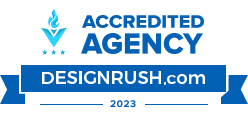Billing is a critical function for modern businesses. An effective billing system allows companies to track sales accurately, send invoices, collect payments, and manage accounts receivable. However, many companies still rely on manual billing processes or use outdated software that is no longer sufficient. Developing custom billing software can provide numerous benefits compared to off-the-shelf solutions or paper-based systems.
With customized billing software, businesses can streamline workflows, reduce human errors, provide better revenue and cash flow visibility, and scale operations more efficiently. Automating billing frees staff resources to focus on high-value tasks like customer service and sales. It also enables real-time reporting and data insights not possible with manual systems. For product companies, billing software development centralizes subscription management, recurring payments, and usage-based models.
Custom billing software can adapt as business needs evolve and provide competitive advantages. The development process allows companies to architect features that map directly to their unique requirements. Rather than settling for the limitations of generic software, custom solutions empower productivity, growth, and innovation. Modern software development delivers the right solution for any organization seeking to optimize billing operations.
Understanding Billing Challenges

For many businesses, billing is a major pain point that causes numerous headaches. Some common challenges include:
Manual and Tedious Invoicing—Creating professional invoices by hand is extremely time-consuming and leaves room for human error if details are entered incorrectly.
Tracking Payments – Keeping track of who has and has yet to pay without a system is challenging. This makes it easy for payments to slip through the cracks.
Reporting Difficulties—Generating reports on billing and revenue data is critical but nearly impossible to do manually. A lack of reporting visibility hurts strategic decisions.
Integration Issues – Standalone billing software that doesn’t integrate with other systems creates silos of data and duplicated work.
Compliance Struggles—Automated help makes Keeping up with changing tax codes and regulations easier. Non-compliance leads to penalties.
Limited Scalability – As the business grows, billing management with spreadsheets and manual processes breaks down. It can’t scale efficiently.
Customer Frustration – Difficult and confusing billing experiences frustrate customers. This hurts retention and referral business.
The correct billing software addresses these common problems through automation, integration, reporting, and more. However, choosing and implementing the software brings challenges, which we’ll explore next.
Must-Have Billing Software Features
Billing software helps businesses streamline and automate invoicing, payment collection, accounting, and financial reporting processes. The best solutions provide comprehensive features to meet a company’s unique billing needs. Here are some must-have capabilities to look for when evaluating billing software platforms:
Invoicing
- Generate professional invoices with custom branding and templates
- Set up recurring invoices for regular services and subscriptions
- Accept online payments and integrate with payment gateways
- Send invoices via email and allow online viewing
- Support multiple currencies and tax rates
Payment Processing
- Accept credit cards, ACH, PayPal, Apple Pay, and more
- Seamlessly integrate with payment gateways like Stripe and Authorize.Net
- Manage refunds and chargebacks from within the software
- Accept partial and installment payments
Reporting
- Customizable reports for sales, revenue, customers, products, taxes, etc.
- Dashboards to view key metrics and track performance
- Export reports to Excel, PDF, and other formats
- Set up automatic report delivery to stakeholders
Automation
- Automate accounts receivable with late payment reminders
- Trigger actions like sending invoices based on set rules
- Sync billing data with accounting software
- Automatically follow up on outstanding invoices
Customization
- Tailor workflows, data fields, and screens to your business
- Build your own invoices, reports, and forms
- Integrate with other apps and systems via API
- Handle complex billing scenarios like usage-based billing
The right billing software provides the critical features companies need to optimize their billing operations for maximum efficiency, insights, and cost savings. Prioritizing these core capabilities ensures the solution can scale with the business over time.
Billing Software Architecture

The architecture of billing software refers to how the system is designed and structured from a technical perspective. Two key considerations are whether to host the software on-premise or in the cloud and how it integrates with other systems.
Cloud vs. On-Premise
Cloud-based billing software is hosted on remote servers and accessed via the Internet. This makes it easier to deploy since there is no need to install software locally. The vendor continually updates cloud solutions so customers benefit from the latest features and security enhancements. Cloud billing software also scales easily as business needs change. However, some businesses prefer keeping data on-premise for increased control and security.
On-premise billing software is installed on a company’s servers. This allows complete control over data security and system configuration. However, it requires dedicated IT resources for maintenance, updates, and scaling. Hybrid solutions are also an option, with some components hosted on-premise and others in the cloud.
Integrations
Billing software requires seamless integration with CRM, accounting, e-commerce platforms, and payment gateways. Open APIs make it easy to connect the billing software to external applications. This avoids duplicate data entry and ensures accurate, up-to-date information across all systems.
Scalability
Billing software needs to scale up or down as transaction volumes change easily. Cloud-based systems make this simpler because capacity can be adjusted quickly. On-premise systems require more effort to scale hardware resources. The software architecture should utilize distributed computing and database sharding to handle large datasets and high loads.
Security
Billing software must securely manage customer payment data. Sensitive information must be encrypted end-to-end, and strict access controls on customer data should be implemented. Cloud solutions rely on the vendor’s security model, which should be thoroughly evaluated. Companies must ensure in-house security best practices for on-premise systems. Regular audits and penetration testing help identify vulnerabilities.
Development Process and Timeline
The development process for billing software typically follows these key phases:
Discovery
This initial phase involves gathering requirements from stakeholders to understand their billing needs, challenges, and goals. The development team will conduct user research, analyze current workflows, review existing systems, and document specifications. Key activities include stakeholder interviews, surveying end users, creating user personas, mapping processes, and outlining features. The discovery phase results in a detailed requirements document that guides the rest of the project.
Design
Design elements such as color schemes, layouts, typography, and interface elements will be finalized during this phase. It also includes designing the technology stack and database schema and solidifying the software’s security strategy to ensure secure transactions. A formal design specification is the primary outcome of this phase.
Development
The development phase is where the coding happens. Using the requirements and design documents as a guide, the developers program each feature of the billing software. They write code, create databases, integrate APIs, and perform a variety of other technical tasks. Regular code reviews ensure that coding standards and best practices are being followed.
Testing
Once the code is written, the software goes through rigorous testing to identify and fix any bugs or issues. This process typically includes unit testing, integration testing, system testing, and user acceptance testing. This phase aims to deliver a quality product to the end-users, free from bugs and errors.
Deployment
After testing, the software is deployed to a production environment, where end users can start using it. During this phase, the development team monitors the software closely for any unexpected issues.
Maintenance and Updates
After deployment, the software enters the maintenance phase where updates, bug fixes, optimizations, and new functionalities are added as needed based on user feedback and performance.
Timeline
The timeline for each phase can vary greatly depending on the complexity of the software, the number of stakeholders involved, and the size and expertise of the development team. As a rough estimate:
Discovery: 2-4 weeks
Design: 4-8 weeks
Development: 12-20 weeks
Testing: 4-8 weeks
Deployment: 1-2 weeks
Maintenance and Updates: Ongoing
It’s also important to note that some tasks may overlap and be cyclical (like testing, bug fixing, and development). Unexpected issues may extend a particular phase beyond its estimated duration. Adequate buffer time should, therefore, be accounted for in any project timeline.

